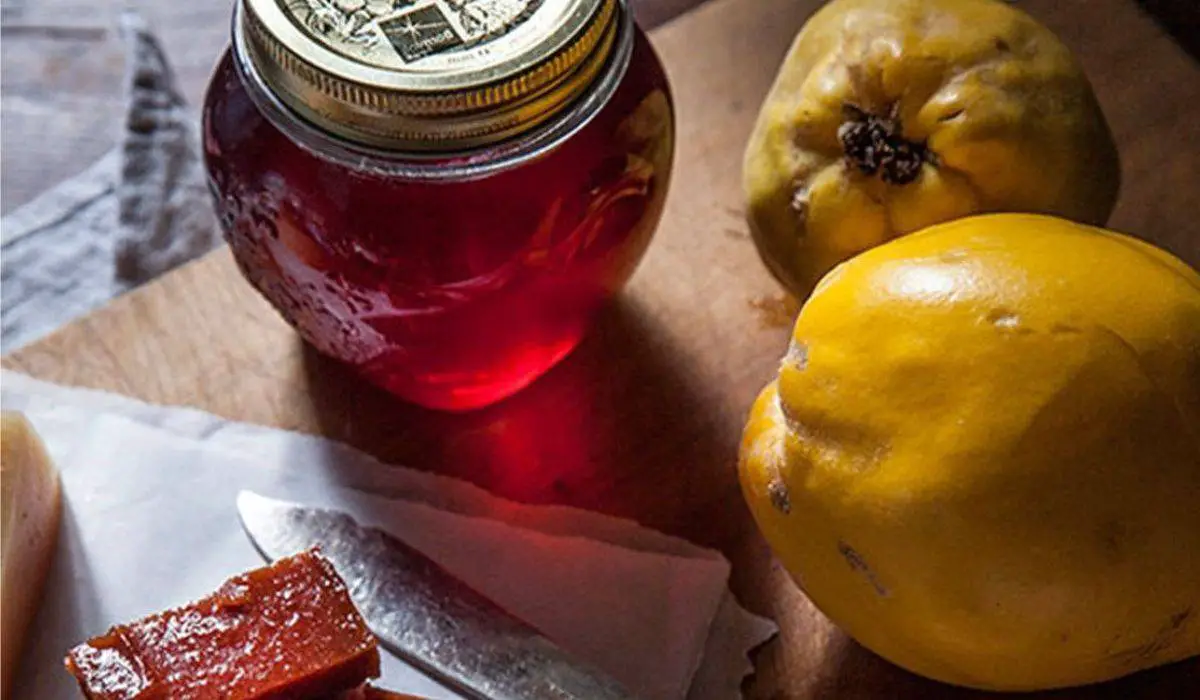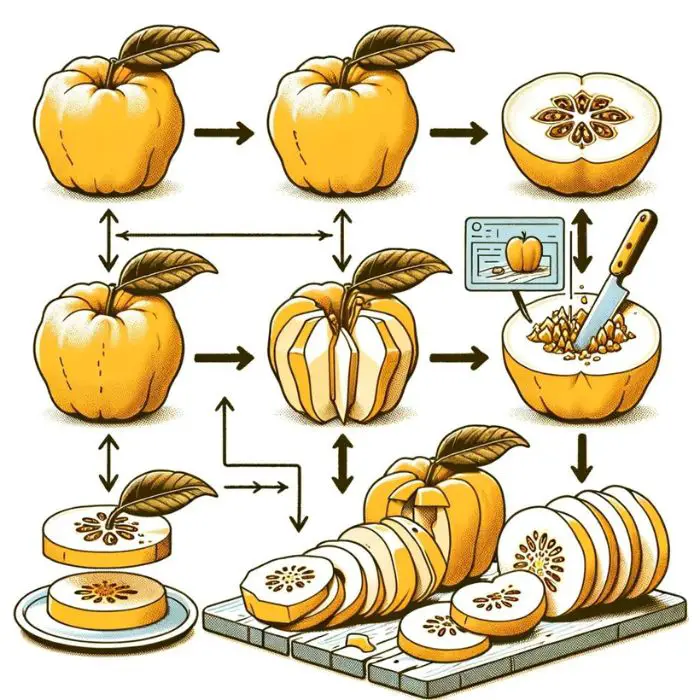Quince is a unique fruit that’s closely related to apples and pears. It’s not commonly eaten raw due to its hard texture and tart flavor. However, when cooked, quince transforms into a delicious and versatile ingredient. So, what can you do with a quince, and how should you go about eating it? Let’s dive in.
Golden Honeyed Quince Pastry Delight
Ingredients:
- 2 large quinces, peeled, cored, and thinly sliced
- 1 pre-made pie crust
- 1 cup sugar
- 1/4 cup honey
- 1 teaspoon lemon zest
- 1/2 teaspoon cinnamon
- 1/4 teaspoon nutmeg
- 1 tablespoon unsalted butter, cut into small pieces
- 1 egg, beaten (for egg wash)
Directions:
- Preheat oven to 375°F (190°C).
- Place the quince slices in a large bowl and toss with sugar, honey, lemon zest, cinnamon, and nutmeg.
- Roll out the pie crust and fit it into a tart pan.
- Arrange the quince slices in a decorative pattern on the crust.
- Dot the quince with butter pieces.
- Brush the edges of the crust with the beaten egg for a golden finish.
- Bake in the preheated oven for 40-45 minutes, or until the quinces are tender and the crust is golden brown.
- Allow the tart to cool for a few minutes before serving. Drizzle with additional honey if desired.
Prep Time: 20 minutes | Cooking Time: 45 minutes | Total Time: 65 minutes
Kcal: 265 kcal | Servings: 8 servings
Quince recipes FAQ
Firstly, quince is excellent for making jams, jellies, and preserves. Its high pectin content ensures that these spreads set well. Moreover, you can use quince in baking recipes, much like you would use apples or pears. Quince pies, tarts, and cakes are popular choices. Additionally, quince pairs wonderfully with meats in savory dishes. You can add it to stews or use it as a stuffing for poultry.
The best way to eat quince is to cook it. Cooking not only softens the fruit but also enhances its flavor. One popular method is to poach quince slices in a mixture of water, sugar, and spices until they become tender. You can also bake or roast quince to bring out its natural sweetness. For a simple yet delicious treat, try making quince paste, also known as “membrillo,” which is a staple in Spanish cuisine. Here’s a recipe for quince paste that you can follow.
Yes, you should peel quince before cooking it. The skin of the quince is tough and can have a bitter taste. Peeling it ensures a smoother texture and better flavor in your dishes. Additionally, you’ll want to remove the core and seeds, as they are not edible.
Absolutely, quince is good for you! It’s low in calories but high in dietary fiber, vitamins, and minerals. Quince is particularly rich in vitamin C and antioxidants, which are beneficial for your immune system. Furthermore, the fruit has anti-inflammatory properties and may aid in digestive health. Healthline provides more details on the nutritional benefits of quince.
Technically, you can eat quince raw, but it’s not generally recommended due to its astringent, sour taste and hard texture. However, if you do choose to eat it raw, make sure to peel it first and be prepared for its tartness. Some people enjoy thinly sliced raw quince with a sprinkle of salt or sugar to balance out the flavor.
In summary, quince is a versatile fruit that shines when cooked. Whether you’re making sweet jams or savory dishes, quince adds a unique flavor that’s sure to impress. So go ahead, give this fascinating fruit a try!
Quince is generally considered safe when consumed in moderate amounts. However, excessive consumption can lead to gastrointestinal issues like bloating and stomach cramps. Additionally, quince seeds contain a compound called amygdalin, which can produce toxic hydrogen cyanide when crushed or chewed. Therefore, it’s crucial to avoid eating the seeds. If you’re pregnant, nursing, or have any pre-existing health conditions, consult your healthcare provider before adding quince to your diet.
Yes, quince can be beneficial for your stomach and overall digestive health. It contains dietary fiber, which aids in digestion and helps prevent constipation. Moreover, quince has been traditionally used to treat gastrointestinal disorders. Some studies suggest that the fruit’s high tannin content can help alleviate symptoms of diarrhea and inflammation. However, more research is needed to confirm these benefits. For a comprehensive look at the health benefits of quince, you can visit Healthline.
Preparing quince is a straightforward process, but it does require some effort due to the fruit’s hard texture. First, wash the quince thoroughly to remove any dirt or pesticides. Next, cut the fruit into quarters and remove the core and seeds. You can then peel the skin if you prefer, although some people like to leave it on for added nutrients. Once you’ve prepared the quince, you can cook it in various ways—baking, poaching, or making it into a jam or jelly are popular options. Cooking not only softens the fruit but also enhances its flavor. For delicious quince recipes, check out BBC Good Food.
While the term “superfood” is not scientifically defined, quince does offer a range of health benefits that could qualify it as such. It’s rich in vitamins like C and E, as well as minerals like potassium and copper. Additionally, quince is a good source of antioxidants, which can help fight off free radicals and reduce oxidative stress. However, it’s essential to remember that no single food can provide all the nutrients your body needs. A balanced diet, rich in a variety of fruits and vegetables, is the key to optimal health.
In summary, quince is a nutritious fruit that offers various health benefits, including aiding digestion. However, it’s essential to consume it in moderation and be aware of potential side effects. Always consult your healthcare provider for personalized advice.










